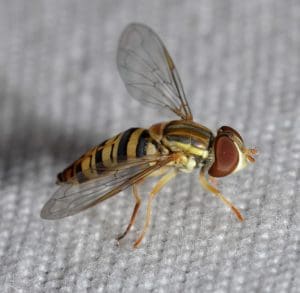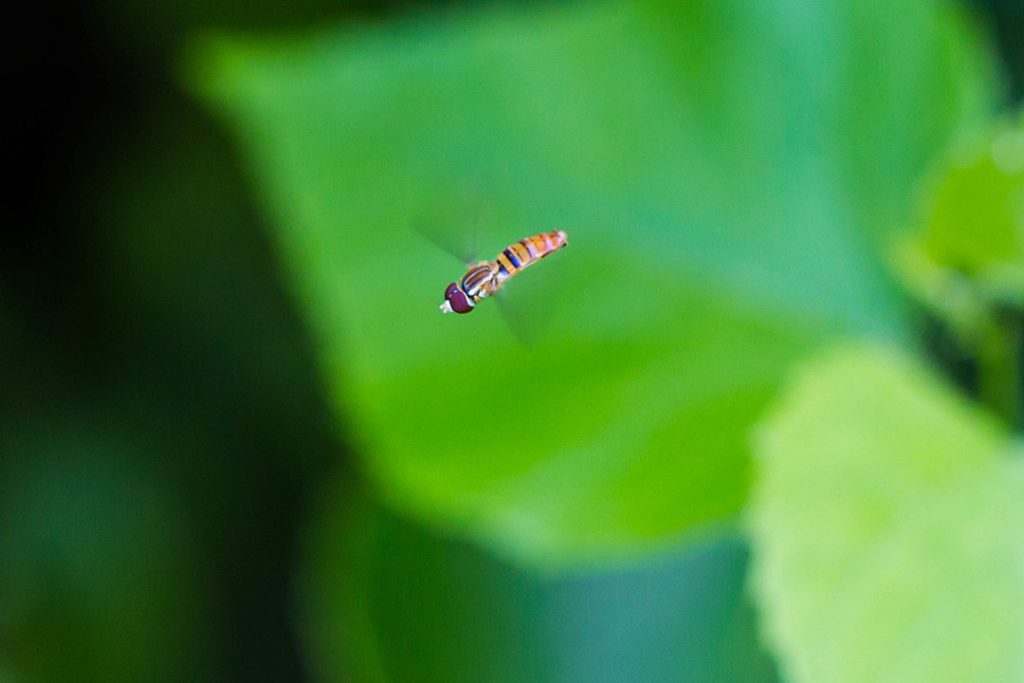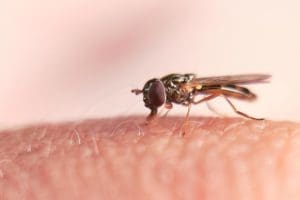Does the hover fly have you “hovering” near the brink of insanity every August? If so, take a deep breath and know they serve a purpose.
If you’ve spent any amount of time near a corn field in the past couple of weeks, you have likely encountered a bee-like insect that seems to take a special interest in invading your personal space. Though often confused with a sweat bee, this lingering flying insect is actually a species of fly, specifically a hover fly.

Also known as a flower fly or syrphid fly, these curious critters are often misunderstood. Unlike sweat bees, hover flies are completely harmless to humans and have no ability to bite or sting. In fact, they share a mutualistic relationship with the crop they are raised on! In the case of the Maize Calligrapher (Toxomerus politus), commonly known as the corn fly, their presence is important for plant pest control. The hover fly larvae, as small, nondescript maggots, readily feed on soft-bodied nuisances such as aphids, helping to rid the corn plants of these sap-sucking parasites. In return the larvae receive a nourishing meal.

The adult hover fly feeds exclusively on nectar and pollen. If you happened to have caught my article in the last edition of the our newsletter (Getting Frisky with Corn), you’ll know that corn plants produce a surplus of pollen grains (14 million to 18 million per tassel), so there is more than enough to go around. This also explains why the adults tend to hang out around crop fields.
In addition, hover flies are considered “incidental” pollinators. This means that when they seek nectar from plants that depend on insects for pollination, they happen to brush up against pollen and spread it from flower to flower. In fact, next to wild bees, hover flies are often considered the second most important group of pollinators worldwide.

Both hover flies and sweat bees tend to loiter nearby for the same purpose: they are attracted to the sweat and moisture on your skin. Unlike sweat bees, hover flies have only one set of wings and have a brightly colored, hairless body. They possess no stinger and their heads are dominated by very large, compound eyes.
